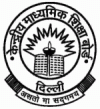Central Board of Secondary Education
(CBSE Class XII) - PHYSICS SYLLABUS
Time: 3 Hours
Marks: 70
- Unit I : Electrostatics - 08
- Unit II : Current Electricity - 07
- Unit III : Magnetic effect of current & Magnetism - 08
- Unit IV : Electromagnetic Induction and Alternating current - 08
- Unit V : Electromagnetic Waves - 03
- Unit VI : Optics - 14
- Unit VII : Dual Nature of Matter - 04
- Unit VIII : Atoms and Nuclei - 06
- Unit IX : Electronic Devices - 07
- Unit X : Communication Systems - 05
Total : 70
Unit I: Electrostatics (Periods 25)
Electric Charges; Conservation of charge, Coulomb’s law-force between two point charges, forces between multiple charges; superposition principle and continuous charge distribution. Electric field, electric field due to a point charge, electric field lines, electric dipole, electric field due to a dipole, torque on a dipole in uniform electric fleld.
Electric flux, statement of Gauss’s theorem and its applications to find field due to infinitely long straight wire, uniformly charged infinite plane sheet and uniformly charged thin spherical shell (field inside and outside). Electric potential, potential difference, electric potential due to a point charge, a dipole and system of charges; equipotential surfaces, electrical potential energy of a system of two point charges and of electric dipole in an electrostatic field. Conductors and insulators, free charges and bound charges inside a conductor. Dielectrics and electric polarisation, capacitors and capacitance, combination of capacitors in series and in parallel, capacitance of a parallel plate capacitor with and without dielectric medium between the plates, energy stored in a capacitor. Van de Graaff generator.
Unit II: Current Electricity (Periods 22)
Electric current, flow of electric charges in a metallic conductor, drift velocity, mobility and their relation with electric current; Ohm’s law, electrical resistance, V-I characteristics (linear and non-linear), electrical energy and power, electrical resistivity and conductivity. Carbon resistors, colour code for carbon resistors; series and parallel combinations of resistors; temperature dependence of resistance. Internal resistance of a cell, potential difference and emf of a cell,combination of cells in series and in parallel.
Kirchhoff’s laws and simple applications. Wheatstone bridge, metre bridge. Potentiometer - principle and its applications to measure potential difference and for comparing emf of two cells; measurement of internal resistance of a cell.
